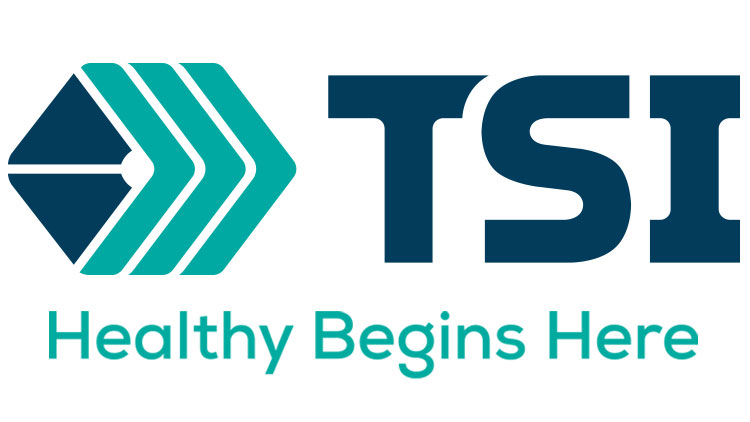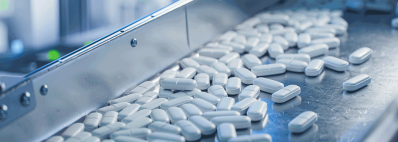Promotional Features
Cracking the Code to Create Ideal Glucosamine Tablets
Glucosamine remains globally desired by active consumers, but it can be tricky to work with. Compressibility is the value to strive for. Here’s why.
A common condition aging brings is joint discomfort and hampered mobility, as wear and tear causes slow degeneration of cartilage and increase in inflammation. Consumers worldwide continue to turn to glucosamine – including those new to the category (which also now includes the fitness minded). Glucosamine is being used in formulas with collagen peptides, hyaluronic acid, herbs such as Boswellia, and of course, chondroitin.
Whether by itself as a solo product or combined with other ingredients, glucosamine powder is a finicky substance. The consistent challenge with glucosamine is that the typical manufacturer uses raw glucosamine material that needs binders and other ingredients to ensure that the tablet itself is properly formed and that the tablet maintains that form through ingestion.
The Compression Conundrum
However, compressing conventional glucosamine powder into viable tablets is a difficult task to achieve consistently. When making a glucosamine tablet product, manufacturers usually aim to ensure each tablet provides a daily dose of 1500 mg glucosamine. Additionally, microcrystalline cellulose (MCC) is added as an excipient to improve compressibility and hardness. However, the added ingredient increases the size of the tablet.
This creates a conundrum: 1500 mg glucosamine in a single tablet leaves scant room for other potentially necessary excipients or lubricants before the tablet becomes too large to swallow. Therefore, a manufacturer attempting to make a product that maximizes the active ingredients must balance this need with tablet quality and size. All too often, this results in a bottle containing a stew of broken tablets, tablets with uneven edges, low hardness and yellow spots, as well as crumbs and powder from disintegrated tablets.
This challenge is further encountered when other active ingredients are combined with glucosamine to create complex formulas.
At the nucleus of the challenge is that tablet manufacturers will often use particle size distribution as an indicator of compressibility, but this is not always a direct correlation. Rather than taking glucosamine with a minimum particle size distribution (PSD) spec and then adding the inactive ingredients to achieve an acceptable tablet, they should instead rely on the glucosamine manufacturer to ensure that the product is compressible and will hold up with minimal addition of excipients like MCC.
Another issue is that the compressibility of the conventional glucosamine material is not always consistent even if it is within the PSD spec. Because glucosamine doesn’t compress at all when it is in powder form it must be in direct compression (DC)-grade granules to process effectively into tablets. The current industry practice where DC granules are measured by PSD does not fully reflect suitable compressibility for tableting. The granules should exhibit high compressibility because PSD alone creates a variability that can have significant impact on operational efficiencies and outcomes.
Although producing finished glucosamine tablets has often been challenging, spurring manufacturers to rely on adding more excipients or focus on particle size distribution of the raw glucosamine, these limitations can be overcome.
The Solution
The key to making a viable tablet with glucosamine is using a granule with the desired compressibility – not just a specified PSD. TSI, with joint expertise in raw material supply and tablet manufacturing, measures the compressibility of every batch to make sure manufacturers can compress the best tablet (not just to deliver on PSD as per spec requirements).
Using DC granules enables production of smaller tablets with better hardness, uniformity and disintegration time, and without chipping and capping, as well as reduces excipients, improves tablet aesthetics, improves operational efficiency and reduces overall costs. The right (high compressibility) granule is the basis of a tablet that performs as the consumer expects and allows for a cleaner label.
TSI direct compressible grade glucosamine can produce tablets with low friability even with no MCC and about 1% magnesium stearate. For example, a manufacturer making a tablet that includes 20% glucosamine HCL, 8% chondroitin, 10% methylsulfonyl methane (MSM) and 6.6% green-lipped mussel was adding 24% MCC and was still unable to compress the tablet. When using TSI’s glucosamine HCl DC they were able to compress and in fact were able to reduce the amount of MCC in the formulation.
TSI’s DC granules are tested for compressibility and every batch is measured to ensure the manufacture of a quality tablet that consumers expect. Better granules ensure your tableting process runs much more smoothly without stoppages to adjust for varying PSD batches. This saves you both time and money.
Additional net benefits gained with using DC granules include overall cost savings through improved efficiency, as there is less pressing force needed to make the tablets, and improved yield because fewer excipients are needed. Further, they allow for optimal doses to be provided in smaller tablets and facilitates development of more complex and unique formulations.
TSI is applying its expertise in processing glucosamine to innovate similar breakthroughs for other finished dose forms including RTDs, capsules, and - a growing formulation in pet nutrition – soft chews.
TSI owns a finished-dose contract manufacturing facility that has been producing more than 300 varied formulations of glucosamine and glucosamine & chondroitin tablets during the past decade. The company manufactures the raw materials, granulates (and co-granulates glucosamine and chondroitin), and also can produce finished products. It is the only company in the world that manufacturers both glucosamine and chondroitin.




